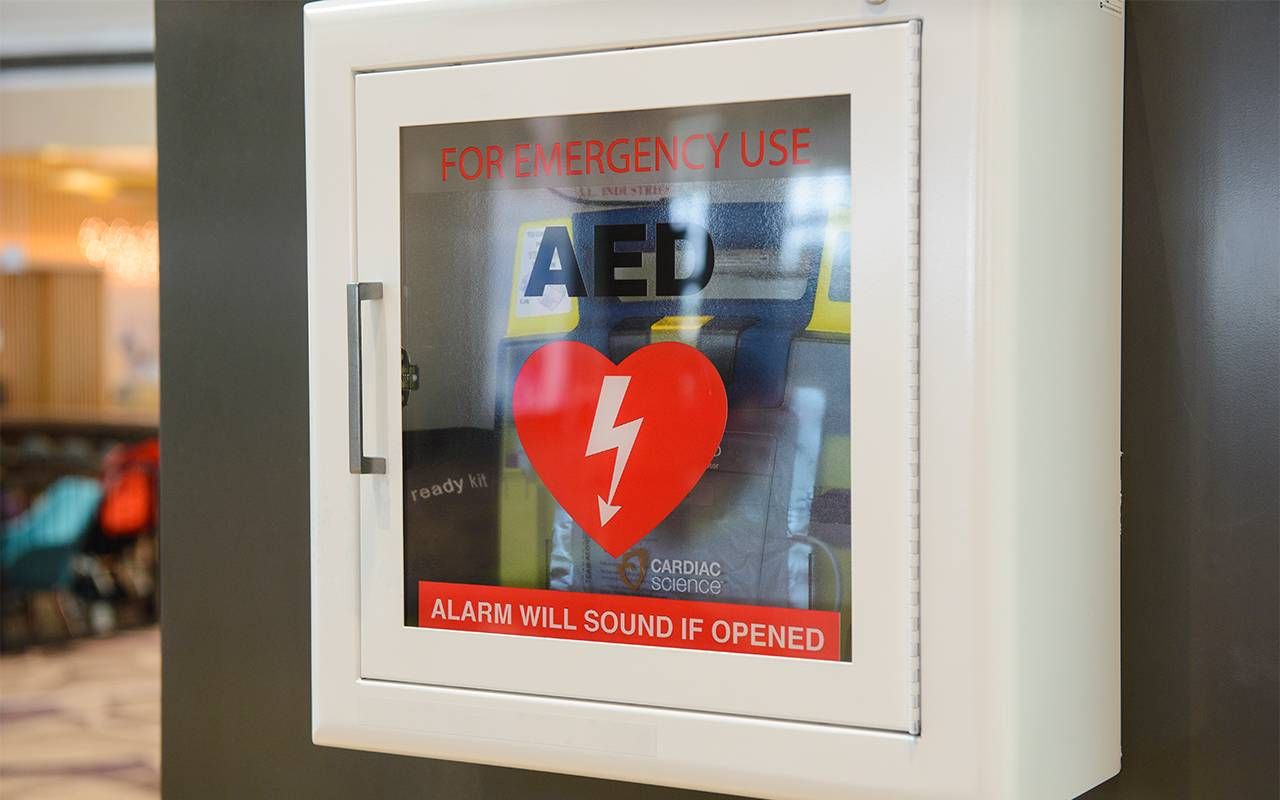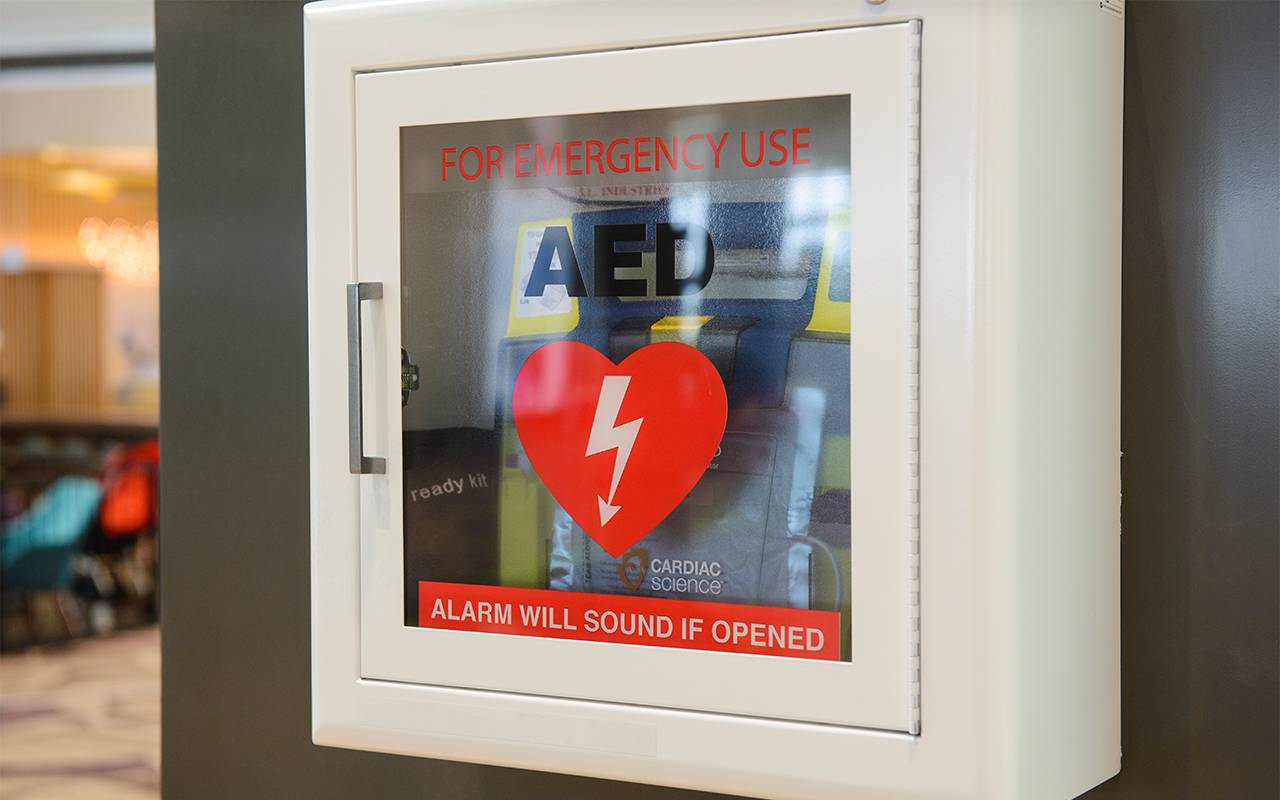Let’s say you are enjoying your morning stroll through the mall for much overdue retail therapy. Directly ahead, you see a man slow down and then drop his bags. In an instant, he is flat out on the ground and unmoving. He just sustained a cardiac arrest.

What is your first inclination? Pretend you didn’t see it and pivot to the next store entrance? Freeze and wait for someone else nearby to notice? Pull out your phone and call 911?
Does stepping in to help in a medical emergency seem terrifying and unrealistic? After all, you have absolutely no medical background. You may be thinking, “What do I possibly have to offer to help this person, if not to only make things worse?” It’s a valid thought. Fortunately, it’s just not true.
Well then, what should you do? I’m happy to share that with you. But before we get to it, I want to preface it with a few points:
CPR is recommended in a witnessed cardiac arrest of an adult or teenager.
When someone has just gone unconscious, their blood is currently oxygenated. The goal of compressions is then to keep the oxygenated blood circulating with minimal interruption. So let’s dig in now that those concerns are out of the way.
Cardiac Arrest
Cardiac arrest is an electrical disturbance of the heart that no longer effectively pumps blood. Ventricular fibrillation is the most common heart arrhythmia leading to cardiac arrest. As a result, the heart fibrillates (quivers) instead of having normal heartbeats. Oxygen is not being delivered to the heart muscle, brain, and other body organs.
What Is an AED?
The average response time after calling 911 is 8-12 minutes. Every minute without CPR and defibrillation by an AED reduces a victim’s chance of survival by 10%.
An AED is a portable medical device meant to be used by bystanders in public areas. It is designed to be remarkably simple to use. Once turned on, it will start speaking step-by-step instructions. The goal is to get electrodes on the victim’s chest so that it can analyze the heart rhythm and give shocks if needed.
The AED will only give shocks if the heart rhythm is ventricular fibrillation. These shocks temporarily stop the heart, providing a normal electrical pathway to resume. Multiple shocks with increasing energy (joules) may be needed.
You can watch many YouTube videos demonstrating using an AED and CPR. Also, check for the most up-to-date videos as recommendations change with new research.
The Case of the Older Man
As stated above, the man walking before you stops, drops his bags, collapses, and is unconscious.
After you’ve checked to ensure it’s safe to approach:
Compressions (on the sternum at the nipple line) should be about two inches deep with full recoil each time at a rate of 100-120 times per minute (Similar to the tempo of the song “Staying Alive”).
There is a law in place that protects Good Samaritans. It safeguards people from liability if they try to help victims in an emergency.
Keep doing compressions until the AED arrives. Once it does, have the retriever open the case and turn it on to initiate its verbal instructions.
Next, bare his chest. There should be scissors in a supply bag attached to the AED. Use these to cut his shirt off. If the victim is a woman, her bra must be cut open.
Electrodes are corded adhesive “pads” with sensors that must be pressed firmly on the chest for the AED to analyze the heart rhythm and deliver electrical shocks. If the chest is wet, it will need to be wiped off. Find the gauze packages in the supply bag and dry the chest.
Next, take the pads from the package, peel the backing off, and press them to their proper location. The pictures on the pads show where to place them. The first goes on the top right part of their chest, and the other on the lower left side below the heart.
What if the man’s chest is so hairy the pads won’t stick to his skin? Check the supply bag for a razor and quickly shave where the pads will go. If there is a second set of adult pads in the case, an alternative is to firmly press the current electrode pads back down to get the best grip on all the hair of the desired location and rip it off. Then apply the extra set of pads on the now hairless skin.
If the person is small and the pads touch each other, move the pad under the heart to the back between the shoulder blades. Plug the electrode cord into the machine after the pads are attached. The AED will announce it analyzes the rhythm and “do not touch the patient.” Once it is finished analyzing, it will either tell you, “Shock advised,” or “No shock advised- continue CPR.”
If a shock is advised, it will increase the ringing noise as it builds up energy. You will be told to loudly state, “Clear!“ and to ensure no one touches the victim. Depending on the brand of the AED, it will either ask you to press the blinking “shock” button when it is ready or warn you that it is about to self-perform the shock. After the shock, you will be told to resume CPR.
The AED will keep time for two minutes of chest compressions; then, it will tell you not to touch the patient while it analyzes the rhythm. The cycle continues. Remember, you don’t need to memorize any of this. Just keep following the AED prompts.
Here is a simple breakdown of the key actions from above:
Fatigue can set in fast while doing chest compressions, so don’t hesitate to ask others nearby to take turns. Try to have as few interruptions in compressions as possible, ideally less than 10 seconds. Stop CPR if you see signs of life. After what feels like an eternity, hopefully, by now, paramedics are running down the hall toward you to take over.
You stepped in to help save a life despite fear and inexperience. So now that your adrenaline is pumping, take a few deep breaths, stretch your back, and head to the nearest coffee shop for your favorite (decaf) beverage.
Andrea Wickstrom, BSN, PHN, RN, has been a nurse for 25 years. Most of her experience is in cardiology at the bedside, stress testing, and with cardiac medical devices. Health literacy is also a passion of hers. Now, she combines her nursing knowledge with her love for writing to reach and educate readers. Read More


